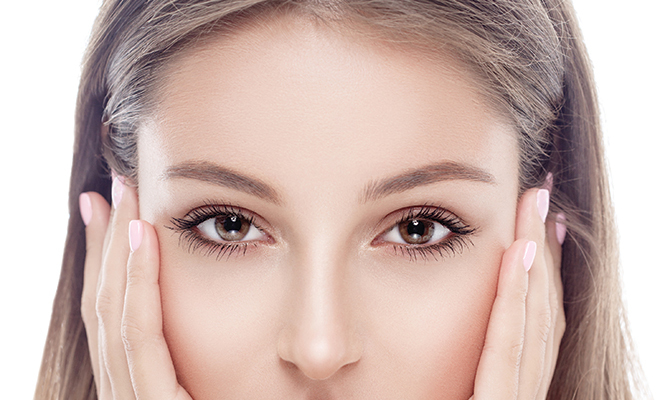
Protect your eyelash health
There is an increasing awareness of the allure of big, beautiful eyelashes today. Women’s magazines have been promoting thick, lush lashes for years now. Many women in the public eye never appear in public without big beautiful fringes. Possibly the last time eyelashes played such a leading role in women’s grooming was back in the ’60s, exemplified by the big-eyed model du jour, Twiggy.
But how we treat our lashes has everything to do with how healthy they are. Not too long ago, I read an alarming story about a woman who went to a salon for discount eyelash extensions, and when she tried to remove them, all of her natural eyelashes came out. She found out too late that the salon worker had put the eyelashes in with glue for hair weaves, which is much stronger than glue used in lash extensions.
For most women, hair tends to begin thinning as they age, accelerating with the advent of menopause, and that includes lashes. However, there are a number of reasons that one may lose lashes, either temporarily or permanently. Alopecia areata is a disease that affects roughly two percent of the population in the U.S. Caused by an autoimmune condition in which the body’s immune system begins to target hair follicles in error, it usually begins with hair loss on the scalp, which then can manifest on eyebrows, lashes and other body hair. Although affecting eyelashes is rare, it does happen. Hair loss from alopecia can be cyclical, so in some, lashes, brows and other hair will eventually grow back.
Besides alopecia and aging, for which there is no cure, there are numerous other reasons that women temporarily lose lashes, including rubbing one’s eyes too vigorously, eye infections, allergies to eyeliner and/or mascara, hormonal imbalances, such as an overactive thyroid, chemotherapy and even mental illness. An obsessive-compulsive disorder called trichotillomania causes the sufferer to obsessively pick at hair on the head, brows and even eyelashes; the condition is more common than one might suppose. In addition, women undergoing chemotherapy for cancer may experience hair loss, not only on their scalps, but lashes and brows as well.
What can women do to improve eyelash health? The most potent solution for eyelash loss is prescription-only Latisse®, which has been proven to regrow lashes. There are also a number of serums that claim to promote eyelash health. They are formulated with a prostaglandin-type compound that occurs naturally in the body. Have a complete eye exam and check with your dermatologist to determine which might be most successful and medically safe for you.
False eyelashes, either in a strip or, more popularly, applied individually as lash extensions, can make for a lush and natural look. Often the longest lash extensions are applied to the outer tip of the lid, and then applied in various lengths throughout the lash line. If done well, they can last up to two months; in general, prices hover around the $300 mark. Aestheticians and cosmetologists are specially trained in the practice of applying lash extensions, and qualified individuals know the appropriate materials and techniques to prevent incidents such as the unfortunate event mentioned above.
At a time when women may be feeling physically most vulnerable through cancer treatment, false eyelashes, as an adjunct to wigs, can do wonders for restoring a sense of normalcy at an extremely trying time. For many women, the loss of hair, which is so visible, makes one feel especially exposed because it seems to announce to the world that they have cancer.
Many cosmetics companies are also now manufacturing lash primers, which are applied before mascara, thereby plumping up lashes. And mascaras are becoming ever more complex, with differently shaped brushes to bring about different desired effects in lashes, and come with names that include such amped-up descriptions as “voluminous,” “superhero,” “mega” and “volume express.”
Eyelash curlers can also be hazardous to eyelash health if they’re not used properly. Beauty experts recommend that you never pull your eyelids up and out to create a strong curl. Keep the strip clean to prevent lashes from sticking to it and being pulled out. Another technique for preventing lash loss is to use a super-gentle makeup remover, as caked lashes can tend to come out if you rub your eyes. The most gentle method is to dab the makeup remover delicately onto your eyelid and lashes and carefully pat off.
Since hair is made of keratin, the same substance as skin and scalp hair, you may also wish to moisturize your fringe in the same way that you do your hair and skin. And taking a multi-vitamin with an emphasis on the B vitamins can’t hurt.
So, as you can see, there’s no reason to settle for a thinning fringe. Any one of the solutions above should be able to start you on your way to lashes that would put even Twiggy to shame. ■
Sources: eyelashserumreviews.com, healthcentral.com, livestrong.com and sheknows.com.







